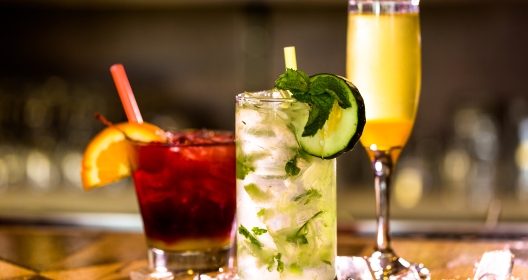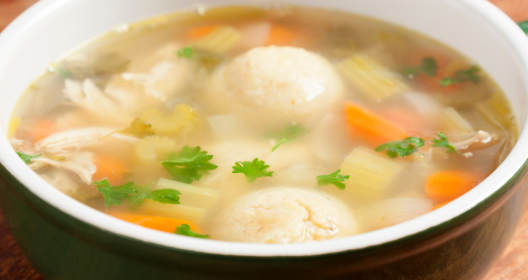
Asian American Heritage Month 2022: East Asian Traditions and Celebrations
May 09, 2022
Woe Tsomo
Front Office Manager
Hilton Garden Inn San Francisco/Oakland Bay Bridge
In the photo, Woe is wearing a traditional Tibetan dress called a Chupa.
Asian American Heritage Month is about recognizing and celebrating contributions of Asians and Pacific Islanders to the building of the U.S. nation. As a first generation Asian American that immigrated from India in 2013 – originally from Tibet – I feel blessed to live in such a diverse country where many cultures share similar values and morals. It feels like a little piece of home is here with me which is comforting especially for someone who just moved here. This month helps me better understand and embrace my own heritage and culture by reflecting on my identity and continuously learning more about our history and its contribution to this country. It also reminds me to not forget my roots and culture, since my ancestors overcame many challenges so that I can live a life filled with opportunities such as working for an inspiring company like Davidson Hospitality that not only celebrates inclusivity but also uses it as a competitive advantage.
I’ll be sharing a recipe for “Momo” also known as soup dumplings, which is the hallmark Tibetan dish that represents my heritage and culture. Due to its popularity, it is now found in other countries such as Nepal, Bhutan and India.
Momo (Soup Dumplings)
INGREDIENTS:
Flour – 2 cups
Ground Beef – ½ lb
Red Onions – ½ medium
Green Onions – ⅓ bunch
Coriander – ⅓ bunch
Oil – 2 tbsp
Water – 2 tbsp
Salt – 1 tsp
Pepper – 1 tsp
DIRECTIONS:
- First knead the dough with flour and water. Let it sit for about 10 – 15 minutes.
- For the filling, chop red onions, green onions and coriander and mix it with the ground beef while slowly adding oil and water.
- Season it with salt and pepper and mix it again.
- Roll the dough and pinch a small ball sized dough and flatten with a palm.
- Dust some flour and start to roll with a rolling pin. Roll it to a medium circle – around 4-5 inch in diameter. Make sure to keep the center medium thick while keeping the outer circle slightly thinner to prevent the dough from ripping apart.
- Take 1 tbsp of the filling and place it on the dough. Start pleating the edges slowly and gather everything. Make sure to seal the momos so that all the juices stay inside.
- Heat a steamer and arrange the momos in the tray without touching each other.
- Let it steam for 11 – 13 minutes.
- It is now ready to serve. People usually eat it with a dipping sauce but you can enjoy this delicious meal by itself as well.
Lisa Xu
Creative Services Manager
Davidson Hospitality Group
As a first generation Asian American, the month of May is always an important month for me to not only reflect on my own Chinese culture, but to also raise awareness for the rest of the AAPI community. There is so much history, traditi
ons, food, and language that makes for many stories to tell, and I am glad there is an entire month dedicated to learning about it.
My parents were immigrants that came to America from China in the late 80’s. They didn’t know a slick of English, but I watched them work tirelessly to raise me, their only daughter, so I could pursue my passion in this country. In return, I always try my best to embrace something that is important to them – our Chinese heritage.
It was their efforts led me here today to be part of the Davidson Marketing team, and I am proud to share a little piece of my culture with the rest of you.
In Chinese culture, congee is staple comfort food that people eat for breakfast or whenever one is sick. Growing up, I ate congee almost every week, and as an adult, it is still the one favorite food no matter what the occasion. Here is short-cut recipe for quick savory congee that will be sure to warm the tummy.
Congee
INGREDIENTS:
¾ cup of rice
5 cups of water or chicken broth
6 oz meat of your choice
1 tsp cornstarch
½ tsp oyster sauce
1 tbsp of vegetable oil
2-3 slices of ginger (julienned)
½ cup chopped green onions
Salt to taste
DIRECTIONS:
- Wash your rice 2-3 times until it drains clear. Place washed rice in zip-loc or airtight container and freeze for at least 8 hours.
- Cut your meat, place it in a mixing bowl, and marinate with cornstarch, oyster sauce, and vegetable oil. Prep this 20-30 minutes before you are ready to make your congee.
- Boil your water (or broth) on medium high, add the frozen rice grains and stir. Wait for the water and rice to boil again (about 15 minutes) then stir to check the consistency. Depending on how thick you want the congee, you may need to continue to cook it longer. If it is too thick, add more water or if it is too watery, add more frozen rice grains.
- Add your meat, ginger, and green onions. Salt to taste, then cook for an additional 5-10 minutes and you’re done! Place your congee in a bowl and garnish with a little bit of green onions and ginger.
Rebecca Scutt
Rooms Controller
The Don CeSar
Coming from a blended family celebrating Asian American Heritage month is an important time for reflection and creating memories with the newest members of our family. It reminds us how important it is to continue passing on our family traditions and values from one generation to the next. The main tradition we pass on to each generation in my family is the First Birthday celebration or a Dol. It started out as a way to celebrate a baby making it through their first year of life and has become a tradition that most families still participate in. The Main event of the night is when the baby is presented with 6-8 objects and they get to choose one. It’s supposed bless the baby’s life
with a successful and healthy journey. The objects can be whatever the family decides. For instance, it could be money for wealth, string for long life, a pencil for intelligence (or more specifically it could represent becoming a writer), or rice could represent never going hungry, etc. When I celebrated my first birthday I chose the string, and just recently my cousin chose the pencil. It’s a tradition I hope our family continues to practice and its one I hope to keep when I have kids of my own.
Hyechong Patterson
Server
Hotel Viking
Vegetarian Chap Chae (Korean Noodles with Vegetables)
INGREDIENTS:
6 Ounces of sweet potato vermicelli noodles (dang myum)
2 Tbls Sesame Oil
½ White Onion (thinly sliced)
2 Scallions (Chopped)
2 Cloves of Garlic (Minced)
½ Cup Dried Shitake Mushrooms (soaked in water for 30 minutes,drained and sliced)
1 Small Carrot (Julienned)
1 Small Zucchini (Julienned)
2 Cups of Spinach
2 Tbls Soy Sauce
2 Tsp Rice Vinegar
1 Tsp Sugar
1 Tbls Toasted Sesame Seeds
Salt to Taste
DIRECTIONS:
- Bring a large pot of water to boil and cook the noodles until al dente, about 5 minutes. Drain, rinse under cold water, drain again, and set aside.
- Heat the sesame oil in a large skillet over medium heat. Add the onions, scallions, garlic, mushrooms, carrots and zucchini and stir fry until softened, about 5 minutes.
- Add the spinach, noodles, soy sauce, rice vinegar and sugar. Turn the heat down to low and stir fry for another 2 minutes. Turn off the heat, toss in the sesame seeds and season to taste with salt.








